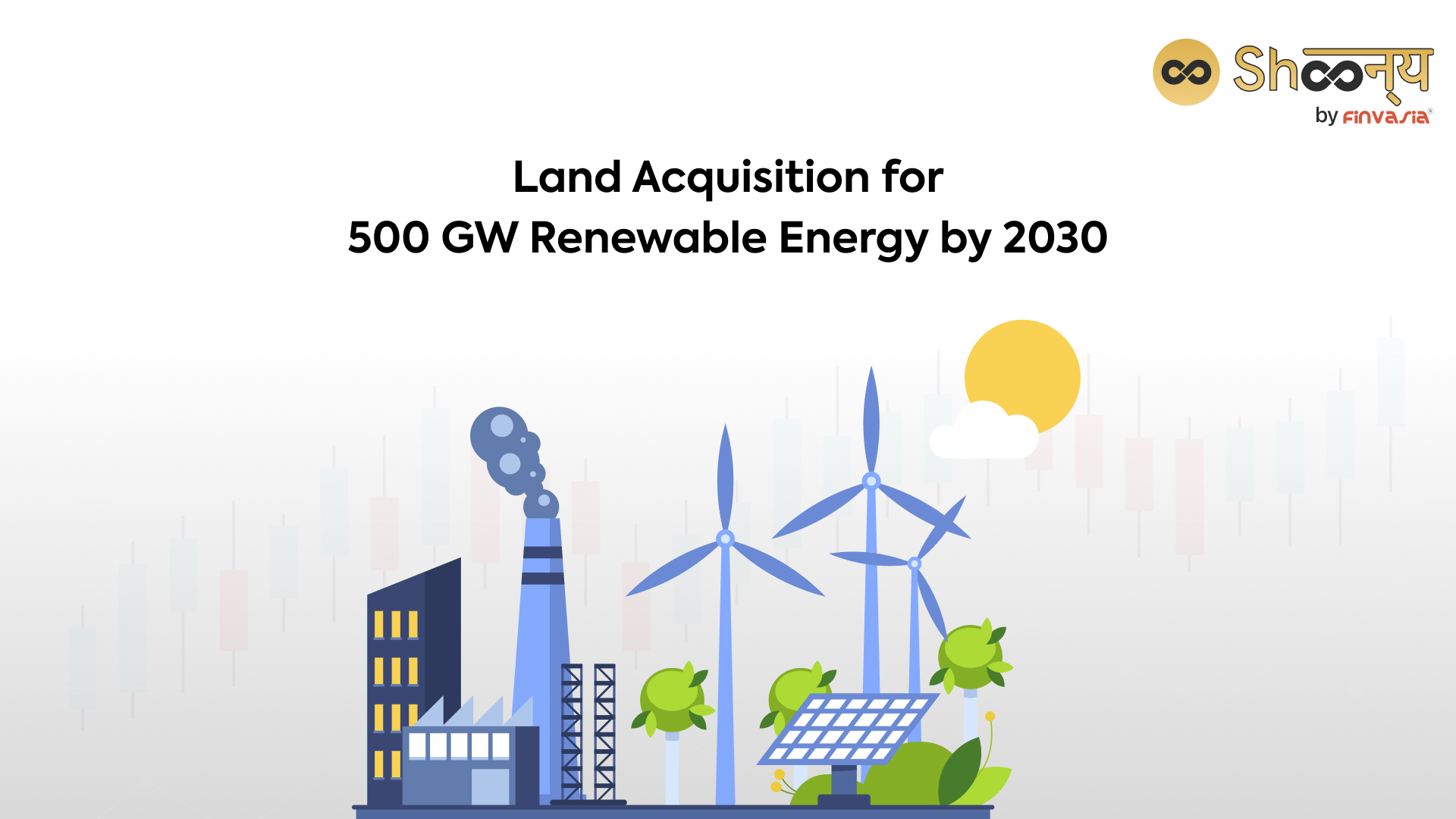Land Acquisition for 500 GW Renewable Energy by 2030

The Centre has asked all states and union territories (UTs) to prepare a renewable energy (RE) plan, with a focus on land acquisition, to help achieve India’s target of 500 gigawatts (GW) of RE capacity by 2030. The state plans will help identify available land parcels across the country for renewable energy capacity addition.
Here are some Key Highlights of the Latest Green Energy news
- The Centre has directed all states and union territories to prioritize land acquisition for renewable energy projects in order to achieve India’s target of 500 GW of renewable energy capacity by 2030.
- Land availability is identified as a major challenge in achieving the target of 485 GW of renewable energy capacity, requiring coordinated efforts between states, union territories, and the central government.
- State action plans will capture strategies and incentive schemes to attract developers and original equipment manufacturers (OEMs) for renewable energy investments.
- Andhra Pradesh, Gujarat, Karnataka, Madhya Pradesh, Maharashtra, Rajasthan, and Telangana are resource-rich states, while Assam and Punjab are identified as resource-deficit in terms of renewable energy capacity.
- State renewable energy plans will provide custom-made solutions based on land availability, ensuring a balanced distribution of renewable energy capacities across states.
- The wind energy target of 100 GW by 2030 only includes land-based projects, as offshore wind policy and tenders are still being developed.
Centre Urges States to Prioritize Land Acquisition for India’s 500 GW Renewable Energy Target by 2030
State Action Plans to Drive Renewable Energy Objectives
State action plans (RE plans) will capture information on various strategies undertaken or planned to achieve the RE objectives. They could also include incentive schemes to attract developers and original equipment manufacturers (OEMs) to invest in their regions, as said by Bhupinder Singh Bhalla, secretary, MNRE- Ministry of New and Renewable Energy.
Current Status of Renewable Energy Projects in India
At present, at least 128 GW of RE projects are either under construction or have been bid out. India has an installed RE capacity of 172 GW, excluding about 7 GW of nuclear power.
Resource-Rich and Resource-Deficit States in Renewable Energy Capacity
According to a report by NITI Aayog, seven states in India, namely Andhra Pradesh, Gujarat, Karnataka, Madhya Pradesh, Maharashtra, Rajasthan, and Telangana, possess abundant resources for renewable energy capacity expansion. On the other hand, Assam and Punjab have been recognised as states facing resource deficits in this regard.
Customised State Renewable Energy Plans for Capacity Addition
“The state RE plans will, therefore, be a custom-made solution for capacity addition,” a senior MNRE official senior official from the Ministry of New and Renewable Energy (MNRE); the customised plans for renewable energy at the state level will be tailored to address the requirements of each state and facilitate capacity addition. For instance, if a state has limited land availability, it may prioritise the implementation of rooftop solar or floating solar projects. On the other hand, states like Rajasthan, which has vast land resources, will need to balance their renewable energy capacities to prevent concentration in a few regions, even though some level of disparity may be unavoidable.
Focus on Harnessing Wind and Solar Energy
India’s annual operational solar power capacity is 67 GW. Another 96 GW is either under implementation or has been bid out. By 2030, the government has set the target of taking its installed solar energy as renewable energy capacity to 292 GW. In wind energy, 43 GW is operational, and another 14 GW is under pipeline. From the current 43 GW, the government is aiming to increase wind energy capacity to 100 GW.
Conclusion
With a target of achieving 500 GW of renewable energy capacity by 2030, this initiative marks an important step towards a greener, sustainable, and fresher future. While the climate and global warming issues keep soaring, there is hope for a better and greener environment.
Sources:
______________________________________________________________________________________
Disclaimer: Investments in the securities market are subject to market risks; read all the related documents carefully before investing.








